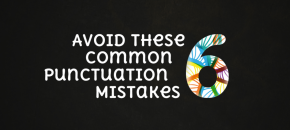Quick English: Using the Colon and Semicolon in English
The colon and semicolon are punctuation marks that are used frequently in the English language. They both normally appear in the middle of a sentence. It is useful to know how to use the colon and semi colon. If you are learning English, it's good to know these key grammatical difference. They can add accuracy to your written work and will impress your teachers when you write essays!
What is a colon?
1. The colon is often used to introduce a list of items.
> You need these items for the day trip: a notebook, a pen and a packed lunch.
> We need the following ingredients to make the cake: eggs, flour, sugar and butter.
2. You can also use a colon to introduce an explanation or a definition of something.
> There are four countries in the United Kingdom: England, Scotland, Wales and Northern Ireland.
> There is no need to rush: class will be starting one hour late.
3. You can use a colon to introduce direct speech or a quotation:
> John asked: "Have you seen Sarah?"
> Asaf looked up and said: "It's true. The dog ate my homework.”
What is a semicolon?
You are probably already familiar with the semi colon. Over the last few years it has become the symbol for the “wink face” ; ) However, it does serve a purpose when writing in English too!
1. It is used to join two complete sentences into single written sentences. It usually suggests that there is a relationship between the sentences.
> The cake was finished; Aisha had spent hours baking it.
> Happiness isn't something you experience; it's something you remember.
2. One more very common use of the semi-colon is to join two clauses using a transition such as however, therefore, or on the other hand.
> Candida is American; however, she lives in the United Kingdom.
> Dan studies English at college; in addition, he takes French classes in the evenings.
How'd you do? Feel confident in your knowledge of the colon and semicolon? Share your results with us and feel free to ask any questions regarding this subject in the comment section below.




